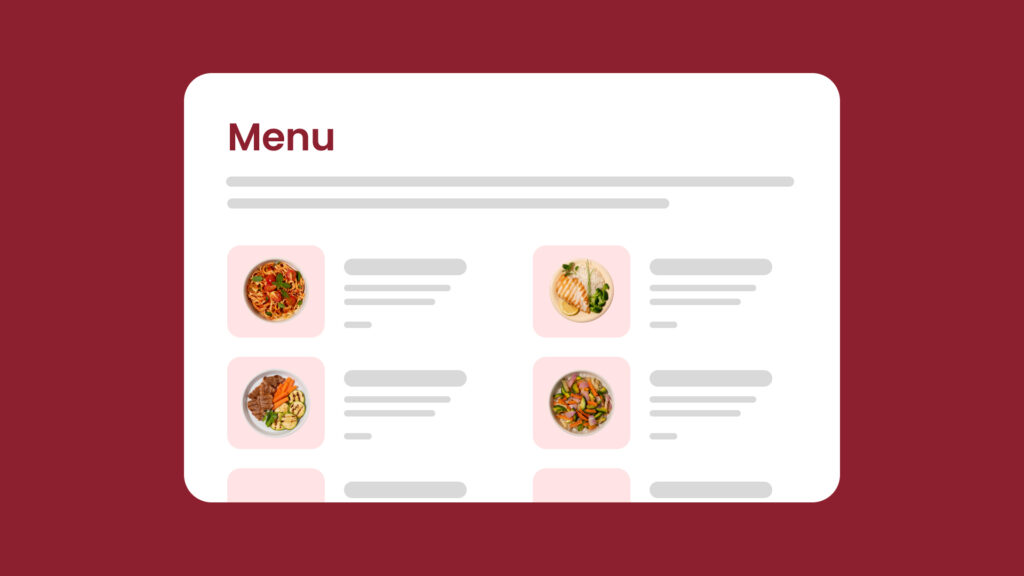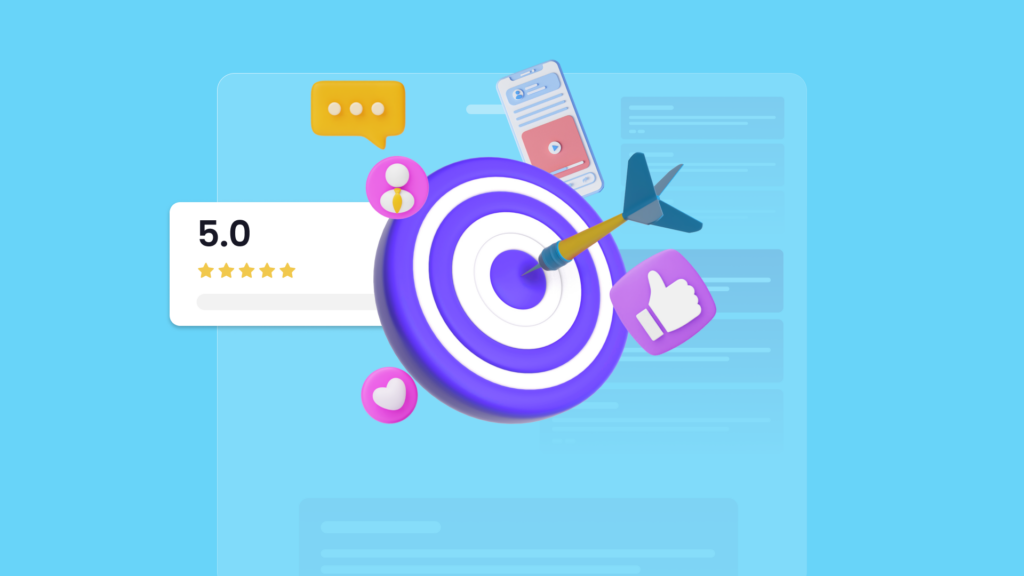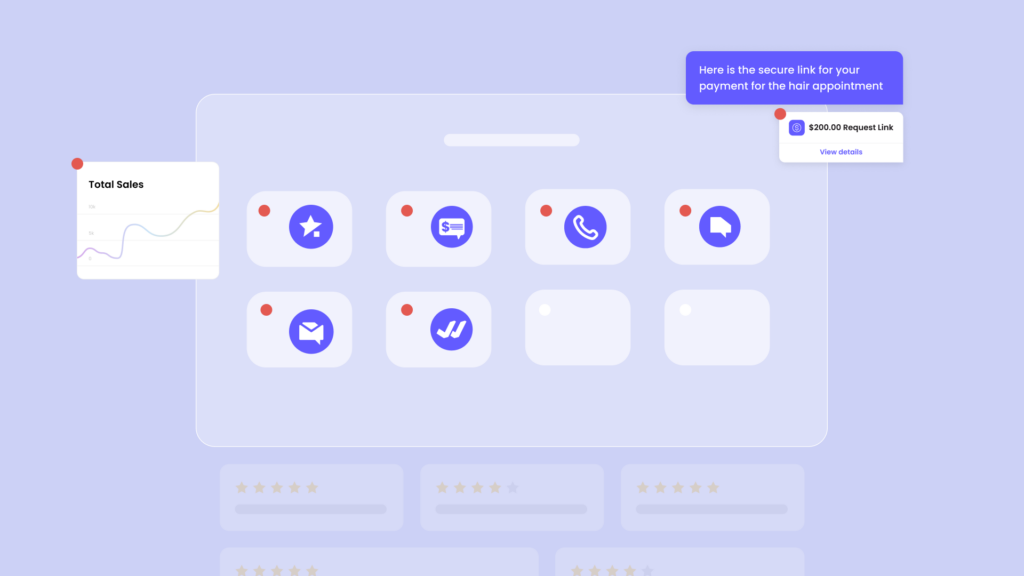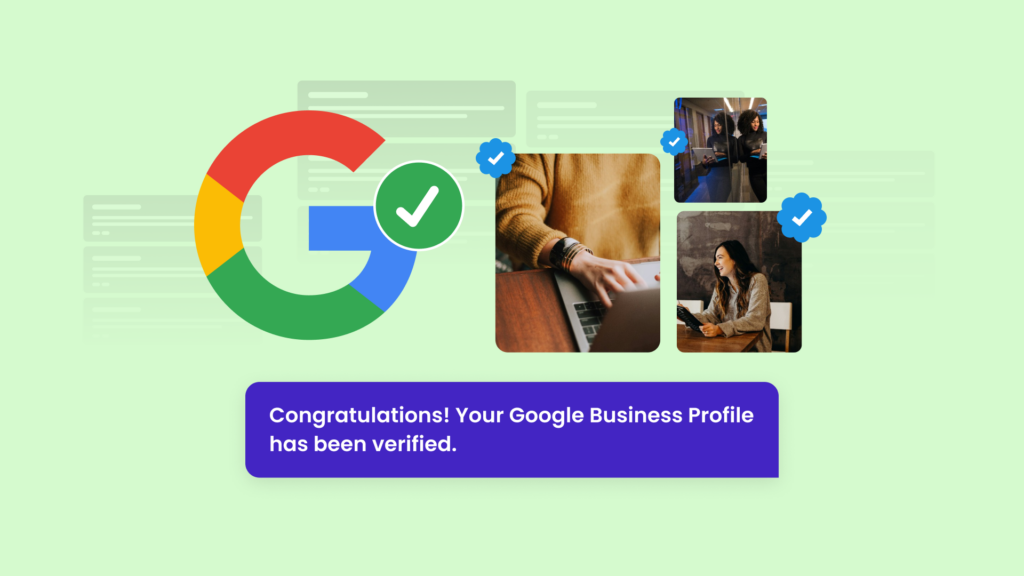Having a website for your restaurant is no longer a luxury but a necessity. With more and more customers turning to the internet to find new dining options, a well-designed and informative website can be the difference between attracting new patrons and losing out to the competition.
However, simply having a website is not enough, it’s crucial to include certain features that make the user experience seamless and enjoyable. In this article, we’ll discuss the top 5 features every restaurant website should have; an online menu, reservations and online booking, customer reviews and testimonials, high-quality photos and videos, and contact information and location details. By incorporating these elements into your restaurant’s website, you can ensure potential customers find your website and are impressed and enticed to make a reservation and experience your cuisine first-hand.
Feature #1: Online menu
Apicius, a first-century Roman, famously said: “You eat with your eyes first.” And in today’s online world, which includes an increased usage of food delivery services and online ordering, the importance of having an online menu on your restaurant’s website cannot be overstated. It can even be a deciding factor in whether or not a customer chooses to dine with you.
Benefits of an online menu
An online menu can help potential customers look at what you offer from the comfort of their own home or office, allowing them to make informed decisions about whether your restaurant suits their tastes and dietary needs. It also helps:
Increase visibility: Having an online menu means your restaurant can be found easily by potential customers searching for food online, which can lead to more website traffic and, ultimately, more business.
Improve customer experience: An online menu can help customers make informed decisions about what to order before they visit, which can help streamline the ordering process at the table. This can help increase table turnover and improve customer satisfaction levels.
Better marketing opportunities: You can easily share online menus on social media platforms, email campaigns, and other marketing channels, which can help to increase brand awareness and attract new customers.
Tips to optimise your online menu
When creating your online menu, there are a few things you can do to ensure it is easy to use and effective.
Keep it simple: Your online menu should be mobile-friendly, easy to navigate, easy to read, and visually appealing with clear headings and categories. You could also consider using a drop-down menu or a search bar to allow customers to find the dish they’re looking for quickly. Use clear, concise language and avoid cluttering the page with too many options because a cluttered menu can be overwhelming and frustrating for customers.
Organise Your Menu: Categorise the menu into different sections, such as appetisers, entrees, and desserts, to make it easier for customers to search for items. You could also consider including popular items or specials in a separate section.
Provide detailed information: Customers want to know what they’re ordering, so include detailed descriptions of each dish to give customers an idea of what each item is and what it contains. This can include ingredients, cooking methods, and any special preparation instructions.
Consider dietary restrictions: There are an increasing number of people following specific diets or dealing with food allergies. According to the Food Standards Agency: “There is no specific legal requirement to label food with ‘may contain’. However, food must be safe to eat, and information to help people with allergies make safe choices, and manage their condition effectively, must be provided.” Therefore, you should include information on your online menu that caters to these needs, such as gluten-free, vegetarian, or vegan options, and clearly label dishes that contain common allergens, such as nuts, soya, and dairy.
Update Your Menu Regularly: While your menu is not set in stone, you should update it regularly to reflect any changes because an out-of-date menu can lead to customer frustration and disappointment. You should add new dishes when they are introduced, update pricing, and remove dishes that are no longer available. This can help to ensure that customers have a positive experience and feel confident in their ordering choices.
Use High-Quality Images: Including high-quality images of your food, especially your most popular dishes can help entice customers and give them a better idea of what they can expect. You could also consider using graphics or icons on these images to help customers quickly identify dishes that meet their dietary requirements or preferences.
Feature #2: Reservation system
A reservation system is a valuable tool for any restaurant, whether it’s a small local eatery or a high-end fine dining establishment. Offering the convenience of online reservations improves the customer experience by reducing waiting times and increasing table turnover and also helps you increase revenue and streamline your operations.
Benefits of a reservation system
Reduces wait times: With a reservation system, customers can book a table at a specific time, allowing you to streamline the dining experience, manage table availability and seating arrangements and reduce wait times, which can lead to higher customer satisfaction and more repeat business.
Reduces no-shows: Another benefit of having a reservation system is that it can help reduce no-shows. Requiring customers to provide credit card information or a deposit to secure their reservation can help reduce the number of reservations that are made but not honoured, which, in turn, can help reduce food wastage and staffing costs.
24/7 booking: Instead of calling during business hours, customers can make a reservation at their convenience. They can select the date, time, and number of people in their party and receive instant confirmation of their reservation. This helps streamline the dining experience and improve customer satisfaction.
Better planning and management: A reservation system provides real-time information about bookings, such as the number of guests, the time of their arrival, and any special requests or dietary restrictions to help you plan accordingly for staffing and inventory needs and ensure you are prepared to serve your guests. Having a clear picture of your reservations can also help you manage your tables more efficiently, reduce wait times and increase customer satisfaction.
Data Insights: A reservation system can provide valuable data insights into customer behaviour and preferences, such as the popularity of certain menu items or the most common time of day for reservations. You can then use this information to make informed decisions about menu items, pricing, marketing campaigns, and staffing levels. Additionally, collected data can help identify areas for improvement, such as reducing wait times or improving the overall customer experience.
Types of reservation system
Manual reservation system: Taking manual reservations, by phone or in-person, may be adequate for small restaurants, but it is time-consuming, can be prone to errors, and may not be able to accommodate larger volumes of reservations.
Online reservation system: Being able to book a table directly through your website is more efficient than manual reservations because it offers the convenience of 24/7 booking, can be integrated with other restaurant management tools and makes it easier for you to manage multiple reservations simultaneously.
Hybrid reservation system: A hybrid system combines manual and online reservation methods and offers customers multiple options for making reservations providing them with greater flexibility and convenience while also giving you more control over your reservations and the ability to adapt to changing circumstances and customer needs, while still maintaining a high level of service. For example, during peak times, you may prefer to take reservations over the phone or in person, while during off-peak times, you may rely more on online reservations.
Waitlist reservation system: This type of system allows customers to join a virtual queue for a table and is generally used by restaurants during peak times when tables are in high demand or those that don’t take reservations. Customers can add their names to the waitlist in person, through the restaurant’s website, or a third-party platform. The system then provides an estimated wait time and notifies the customer when their table is ready, meaning they don’t have to wait in person. A waitlist system can help you reduce wait times, improve the customer experience, and manage your tables more efficiently.
Third-party reservation systems: These systems, such as OpenTable or Resy, allow customers to book tables at multiple restaurants through one platform. But while they may be convenient for customers, they often charge a commission fee to the restaurant for each reservation made through their platform and may not offer as much control over reservation management compared to an in-house reservation system.
Feature #3: Reviews and testimonials
Having reviews and testimonials on a restaurant’s website is a valuable feature that can influence customer decision-making and improve its overall reputation. With the increasing importance of online reviews and their impact on consumer behaviour, restaurants need a strategy for gathering and displaying reviews.
Impact on customer behaviour
Reviews play a critical role in the decision-making process for many customers. According to BrightLocal’s ‘Local Consumer Survey 2023’, 98% of people read online reviews for local businesses. Additionally, 46% of consumers trust online reviews as much as personal recommendations, while 27% trust them as much as professional reviews.
Positive reviews can help build trust and credibility with potential customers, while negative reviews can have the opposite effect.
Why you should respond to reviews
Responding to reviews is an important aspect of managing your restaurant’s online reputation. The simple act of responding can impact your customers’ perceptions because it shows you care about their experiences and are willing to make things right.
In fact, according to BrightLocal, 88% of consumers are likely to use a business if they see the business owner responding to all reviews, positive or negative.
When responding to reviews, it’s important to be professional, courteous, and empathetic. Responding to negative reviews constructively and empathetically can help turn a negative experience into a positive one and show potential customers that you value their feedback. For more information on responding to negative online reviews and protecting your online reputation, check out our article here.
Strategies for gathering and displaying reviews
- Encourage customers to leave reviews: Include a call-to-action on your website or receipts encouraging customers to leave a review. According to the consumers asked in the BrightLocal survey, the most effective ways of asking for reviews are by email (34%), in-person (33%) or on the receipt (32%)
- Respond to reviews: As already mentioned, responding to both positive and negative reviews shows customers you value their feedback and are committed to improving their experience.
- Display reviews prominently: Feature your reviews prominently on your website. Include the best ones on your homepage, and have a dedicated “reviews” page or, at least, add a link to your review platform, such as Google, Facebook, Yelp, TrustPilot, etc.
- Use visual elements: Incorporate visual elements with your reviews, such as images or videos, to help showcase the restaurant’s experience and food quality. These can then be used on your website and social media platforms.
- Leverage social media: You can use social media platforms to encourage customers to leave reviews and broadcast the reviews you receive as posts.
Feature #4: Make it mobile-friendly
According to Exploding Topics ‘Internet Traffic from Mobile Devices’ February 2023 report, 92.1% of internet users access the internet using a mobile phone, and 60.04% of all website traffic comes from mobile devices, meaning that having a mobile-friendly website is critical for your restaurant’s success.
A mobile-friendly website can improve the user experience for customers visiting your website from their smartphones. In general, a website optimised for mobiles will load faster, have a more user-friendly layout, and be easier to navigate on smaller screens, while a website that is not, may cause frustration and disengage potential customers.
Top tips for optimising your website for mobiles
- Optimise page load times: According to Google Analytics, 53% of users abandon a mobile site if it takes longer than 3 seconds to load. By reducing image sizes, minimising complex graphics usage, and optimising CSS and JavaScript files, you can help improve your website page load for mobile devices.
- Use a responsive design: Many website builders offer responsive design templates that automatically ensure your website is user-friendly and easy to navigate on all devices by adjusting the website’s layout based on the screen size.
- Simplify navigation: Make sure your website is easy to navigate by using drop-down menus, reducing the number of clicks required to access information, and ensuring buttons and links are large enough for easy tapping.
- Prioritise key information: Make sure your restaurant’s address, phone number, hours of operation, and menu, are easy to find.
- Test the website on multiple devices: Before publishing your website, it’s important to test it on various devices, including smartphones and tablets, to ensure it looks and functions correctly on all of them.
Feature #5: Contact information and location
When you’re running a restaurant, providing excellent food and service is only half the battle. How can customers make reservations or place orders if they can’t find or contact you? Providing clear and easily accessible contact information and location details on your website is essential and is the first step to giving customers a stress-free dining experience.
Your contact information should be prominently displayed on your website’s header or footer, and should include the following: restaurant name, phone number, email address, physical address, opening times, and social media links.
While displaying your location details can also build trust, improve search engine visibility, and enhance the customer experience.
Top tips for creating a location page
- Use a map: Displaying a map on the location page will help customers discover where you are.
- Provide directions: Include detailed directions from major roads or landmarks to your restaurant.
- Include parking information: If you have your own car park, provide details on how and where to park, and if not, provide information on nearby parking options.
- Highlight public transportation options: Include information on nearby bus or train stops, such as bus route numbers and the stop names.
- Showcase nearby attractions: If your restaurant is near a popular tourist attraction or landmark, you can include this information on the location page to entice potential customers.
Feature #6: Add webchat
The restaurant industry is known for its fast-paced environment, and restaurant owners need to be constantly available for their customers. That’s why a valuable addition to any restaurant website is a webchat tool that allows customers to chat directly with a restaurant representative in real time.
Webchat tools, like Magic Webchat, can be:
- Customised enabling you to tailor the chat widget to fit the look and feel of your website, making it more visually appealing and engaging for customers.
- SMS-powered, meaning you can receive and respond to messages from customers directly on your mobile devices.
- Used across multiple restaurant locations enabling customers to easily chat with any of your restaurant locations and get the information they need quickly and efficiently.
Benefits of a webchat tool
- Improved customer service: Customers get their questions answered quickly and more efficiently, leading to a better overall customer experience.
- Increased efficiency: Your team can handle multiple chats simultaneously, improving efficiency and productivity.
- Cost-effective: By eliminating the need for expensive phone systems and call centres, a webchat tool is a cost-effective way to provide customer support.
- Enhanced customer engagement: Customers can chat directly with your team, which helps increase customer engagement and loyalty.
Top tips for implementing a webchat tool
- Choose the right tool: It’s important to choose a webchat tool that is user-friendly, customisable and meets the needs of your restaurant.
- Train your team: Make sure you train all your team on how to use the webchat tool, so they can provide the best possible customer service.
- Be available: Customers expect to be able to chat with a representative in real-time, so make sure that your team is available to respond to chats during business hours.
- Set clear expectations: Let customers know when they can expect a response to their chat, and be transparent about any wait times.
Click here to read our article ‘What are the 3 must-have features of a webchat tool?’ which discusses in more detail what you should look for in a webchat tool.
Key takeaway
A restaurant website is often the first point of contact between you and your customer, so a well-designed website is no longer a luxury but a necessity. To attract new customers and retain loyal ones, you can make a great first impression by providing a website that is visually appealing, easy to navigate, and informative.
By including features including an online menu, a reservation system, reviews and testimonials, and contact and location details, and using a responsive design to make your website mobile-friendly, you can improve customer satisfaction, increase bookings and revenue, and strengthen your online presence.
About Magic
Magic helps local businesses grow. Thousands of local businesses use Magic to get more online reviews, win new customers, easily manage customer conversations and grow sales. Magic offers these features:
- Reviews: Get more reviews with easy review requests for popular review sites like Google, Facebook, Yelp, TrustPilot, and more. Rank high on local search and enhance your visibility on Google.
- Inbox: Keep track of customer conversations across channels in one inbox, including SMS, Facebook, Instagram, and Gmail. Manage conversations better as a team and do more with industry specific templates.
- Text Marketing: Drive more sales with instant text campaigns and reach your customers at the right moment with automation. Use prebuilt templates to send out text campaigns in minutes.
- Webchat: Turn website visitors into customers with SMS powered Webchat. Chat to website visitors directly through SMS so you won’t miss a lead, even when they leave your website.
Looking to grow your local business? Book in a demo call now. Follow us on Instagram and Facebook



